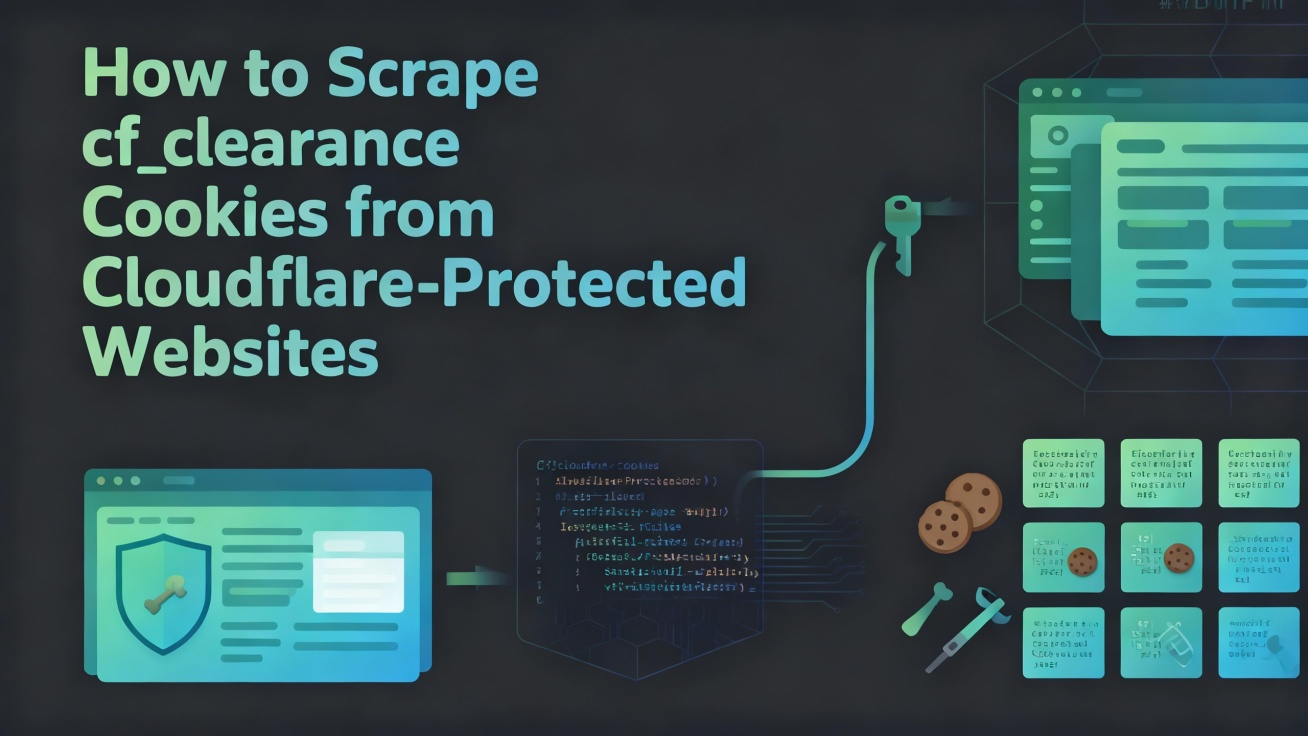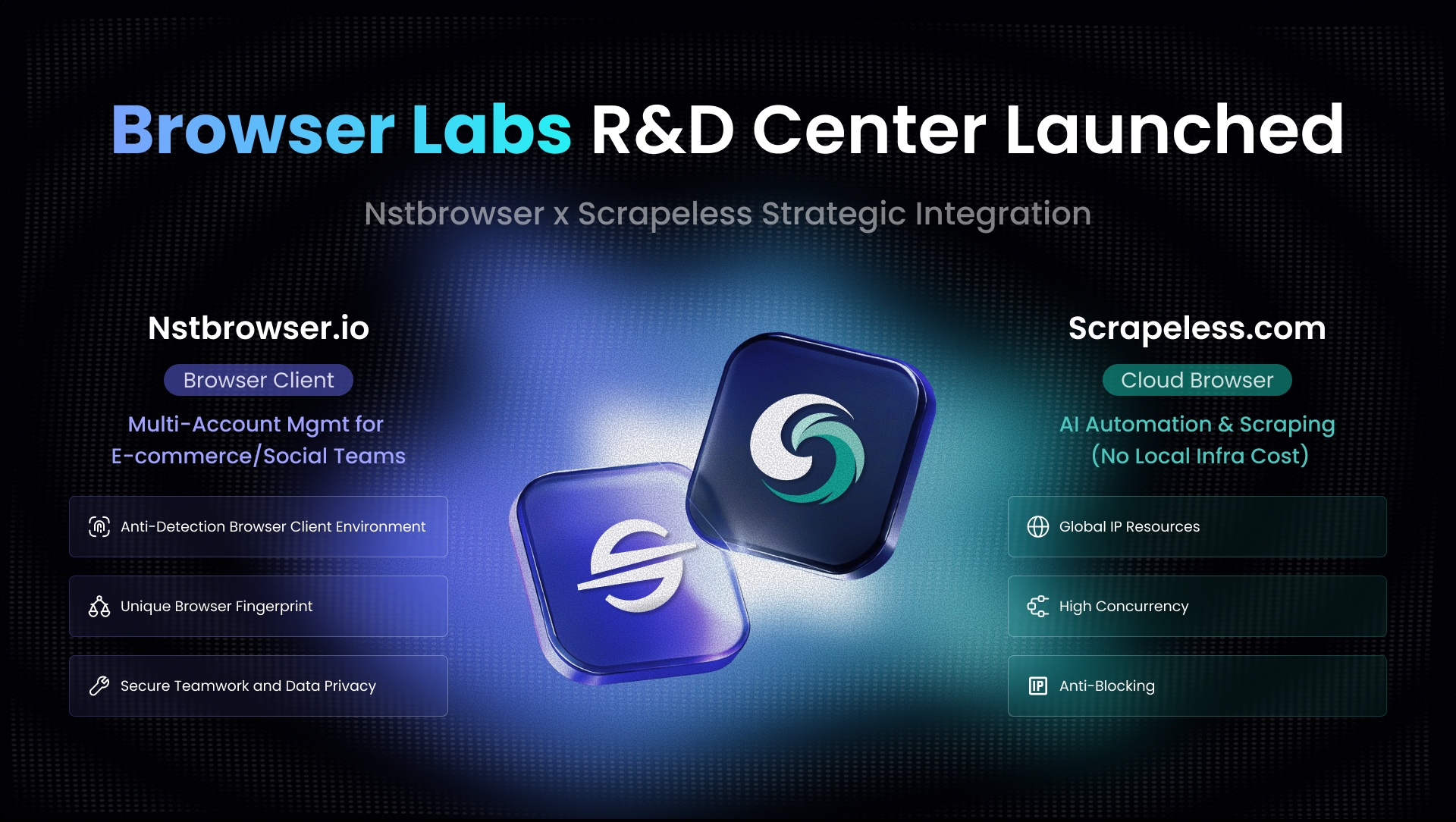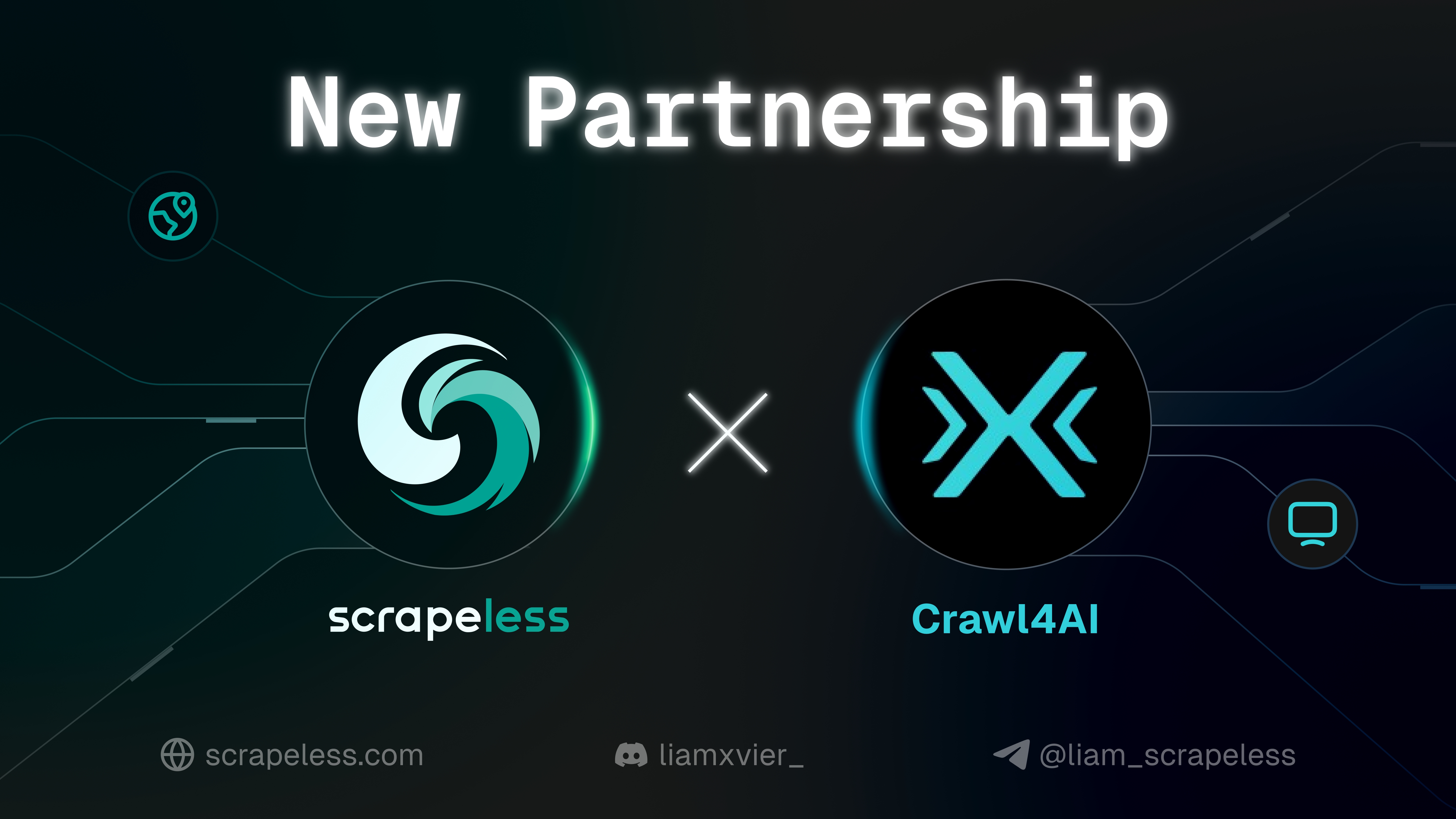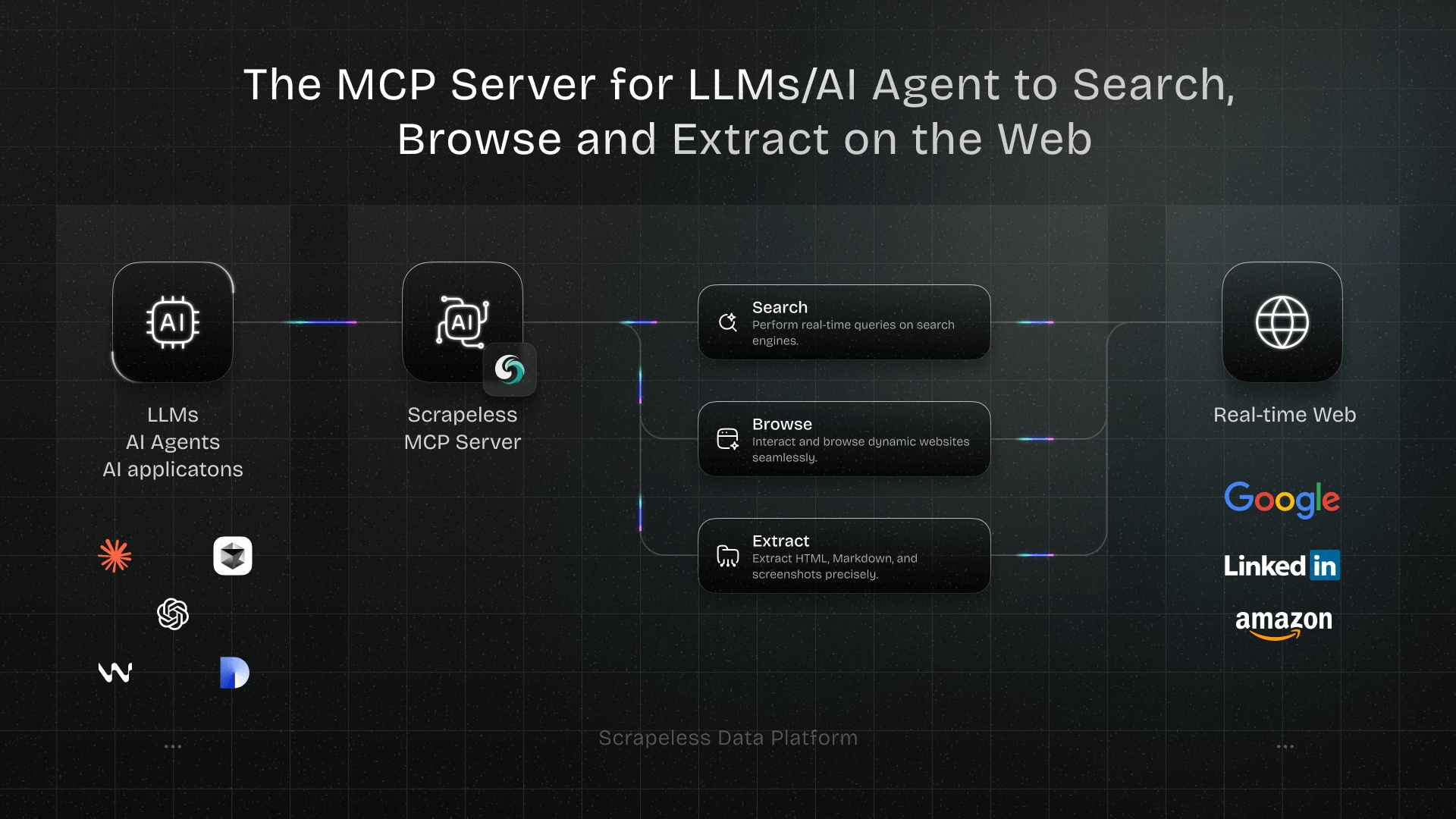Manage Cloudflare cf_clearance Cookie for Persistent Scraping
Expert Network Defense Engineer
Key Takeaways
- The
cf_clearancecookie is the crucial token issued by Cloudflare that proves a user has successfully passed a security challenge. - For reliable, persistent web scraping, you must not only obtain the
cf_clearancecookie but also manage its expiration and ensure it is paired with a consistent browser fingerprint. - Traditional scraping methods struggle with
cf_clearancepersistence because the cookie is often tied to the specific TLS and behavioral characteristics of the session that generated it. - The Scrapeless Browser solves this by providing persistent, isolated browser profiles that automatically handle the challenge-solving, cookie storage, and fingerprint consistency in a single, managed environment.
Understanding Cloudflare and the cf_clearance Cookie
Cloudflare is the world's largest content delivery network and a primary provider of website security, protecting millions of sites from malicious traffic, including automated web scrapers. When a user first attempts to access a Cloudflare-protected site, they are often met with a security challenge—a JavaScript check, a CAPTCHA, or a "Checking your browser" screen.
The cf_clearance cookie is the reward for successfully passing this security check. It is a temporary, time-limited token that the server issues to the client's browser.
How the cf_clearance Cookie Works
The cookie's function is simple yet critical: it acts as a proof of clearance [1].
- Challenge Phase: The browser is forced to solve a computationally intensive JavaScript or visual challenge.
- Verification Phase: Upon successful completion, the browser sends the solution back to the Cloudflare server.
- Issuance Phase: The server verifies the solution and, if correct, issues the
cf_clearancecookie to the browser. - Access Phase: For the duration of the cookie's lifespan (typically 30-60 minutes), the browser can access the protected site without facing the challenge again, provided the cookie is included in every subsequent request.
For web scrapers, obtaining and managing this cookie is the difference between successful data collection and being permanently blocked. The ability to reuse the cookie eliminates the need to solve the computationally expensive challenge on every single page view, dramatically increasing scraping speed and efficiency.
The Challenge of Maintaining cf_clearance Persistence
While obtaining the cf_clearance cookie is the first step, maintaining its persistence and using it reliably for large-scale scraping presents significant technical hurdles for self-managed solutions.
Challenge 1: The Cookie is Not Enough
The most common misconception is that simply extracting and reusing the cf_clearance cookie is sufficient. In reality, Cloudflare's security model is far more complex. The cookie is cryptographically tied to the browser and network fingerprint that generated it, including:
- TLS/SSL Fingerprint: The unique signature of the client's secure connection handshake.
- User-Agent: The specific browser version and operating system used.
- Headers: Other request headers that were present during the initial challenge-solving request.
If a scraper attempts to reuse a valid cf_clearance cookie with a different User-Agent, a different TLS fingerprint, or from a different IP address, the request will be flagged as suspicious and blocked, often resulting in a new challenge [2].
Challenge 2: Expiration and Renewal
The cookie has a limited lifespan, typically under an hour. For continuous scraping operations that run for days or weeks, the scraper must be capable of:
- Monitoring Expiration: Tracking the cookie's remaining time.
- Automated Renewal: Recognizing when the cookie has expired and automatically re-initiating the challenge-solving process to obtain a new one, all without human intervention.
Challenge 3: Infrastructure and Maintenance Burden
Traditional scraping requires developers to build a complex infrastructure to handle this persistence:
- An anti-detection layer (like Puppeteer-stealth) to solve the initial challenge.
- A database to store the
cf_clearancecookie and its associated metadata (User-Agent, etc.). - A proxy manager to ensure the IP address is consistent for the cookie's lifespan.
- A renewal loop to re-run the challenge solver upon expiration.
This constant maintenance makes self-managed scraping projects prohibitively expensive and time-consuming.
The Solution: Persistent Sessions with Scrapeless Browser
The Scrapeless Browser is engineered to abstract away the entire complexity of cf_clearance persistence and Cloudflare bypass. It replaces the brittle, manual process of cookie management with a robust, managed service that handles the challenge, the cookie, and the fingerprint all in one persistent session.
The core of the solution lies in the concept of a Persistent Browser Profile (often referred to as an isolated environment).
| Feature | Manual cf_clearance Management |
Scrapeless Persistent Sessions |
|---|---|---|
| Challenge Solving | Requires running a separate, complex anti-detection script (e.g., Pyppeteer-stealth). | Automatic and real-time via built-in Smart Anti-Detection. |
| Cookie Persistence | Manual storage, retrieval, and injection of the cookie and associated headers. | Automatic persistence within the isolated browser profile. |
| Fingerprint Management | Manual configuration of TLS, User-Agent, and behavioral patches. | Guaranteed consistency of all browser and network fingerprints. |
| Scalability | High maintenance burden; difficult to scale without session overlap issues. | Unlimited concurrency with dedicated, isolated profiles for each target. |
| Maintenance Burden | High; constant monitoring of Cloudflare's evolving detection methods. | Zero; fully managed and automatically updated by the platform. |
Case Study: Bypassing Cloudflare with Scrapeless
Recommended Reading: How to Bypass Cloudflare Protection and Turnstile Using Scrapeless | Complete Guide
The Scrapeless Browser simplifies the entire process. Instead of managing the cookie, the developer manages a persistent session ID. The platform handles the rest.
The process is as follows:
- Start a Persistent Session: The user initiates a browser session with a unique ID. This ID corresponds to an isolated, persistent profile on the Scrapeless infrastructure.
- Automatic Challenge Pass: The first request to the Cloudflare-protected site triggers the challenge. The Scrapeless Browser's built-in anti-detection automatically solves the challenge.
- Automatic Cookie Storage: Cloudflare issues the
cf_clearancecookie. The Scrapeless profile automatically captures and securely stores this cookie, along with the exact browser fingerprint that generated it. - Persistent Access: All subsequent requests within that session ID automatically use the stored cookie and the correct, consistent fingerprint, bypassing the challenge until the cookie expires.
This capability is demonstrated by the platform's ability to seamlessly handle the initial challenge and maintain the session, as shown in the official documentation [3].
Example Code Snippet (Conceptual)
While the exact implementation will depend on the SDK, the concept is to pass a configuration that enables persistence, eliminating the need to manually handle the cookie:
python
import puppeteer from 'puppeteer-core';
const API_KEY = 'your_api_key'; // Replace with your actual API Key
const host = 'wss://browser.scrapeless.com';
const query = new URLSearchParams({
token: API_KEY,
session_ttl: '180',
proxy_country: 'GB',
proxy_session_id: 'test_session',
proxy_session_duration: '5'
}).toString();
const connectionURL = `${host}/browser?${query}`;
(async () => {
try {
// Connect to Scrapeless
const browser = await puppeteer.connect({
browserWSEndpoint: connectionURL,
defaultViewport: null,
});
console.log('Connected to Scrapeless');
// Open a new page and navigate to the target website
const page = await browser.newPage();
await page.goto('https://www.scrapingcourse.com/cloudflare-challenge', { waitUntil: 'domcontentloaded' });
// Wait for the page to load completely
await page.waitForTimeout(5000); // Adjust delay if necessary
await page.waitForSelector('main.page-content', { timeout: 30000 });
// Capture a screenshot
await page.screenshot({ path: 'challenge-bypass.png' });
console.log('Screenshot saved as challenge-bypass.png');
// Close the browser
await browser.close();
console.log('Browser closed');
} catch (error) {
console.error('Error:', error);
}
})();By relying on the Scrapeless Browser, developers can treat a Cloudflare-protected site as if it were an unprotected API, focusing entirely on data extraction logic rather than the constant battle of session management and anti-bot evasion.
Conclusion
The cf_clearance cookie is the key to persistent web scraping on Cloudflare-protected sites. However, the complexity of manually managing its expiration, renewal, and cryptographic ties to the browser's fingerprint makes self-managed scraping projects unreliable and costly.
The Scrapeless Browser provides the necessary infrastructure by offering a fully managed, persistent browser profile. It automates the entire process—from challenge solving to cookie storage and fingerprint consistency—ensuring that your data streams remain uninterrupted and your focus remains on competitive intelligence.
Ready for Uninterrupted Data Streams?
Stop troubleshooting expired cookies and failed challenges. Achieve true persistence with a fully managed anti-detection browser.
Start Your Free Trial with Scrapeless Today
Frequently Asked Questions (FAQ)
Q1: What is the lifespan of a cf_clearance cookie?
A: The lifespan of a cf_clearance cookie is typically between 30 and 60 minutes, though Cloudflare can adjust this based on the perceived threat level. For persistent scraping, the cookie must be renewed automatically before it expires.
Q2: Does the cf_clearance cookie work for all Cloudflare protections?
A: The cf_clearance cookie is primarily issued after passing the older JavaScript or CAPTCHA challenges. Newer Cloudflare protections, such as Turnstile, may not issue a cf_clearance cookie at all, relying instead on a different token or continuous behavioral monitoring [4]. Scrapeless is designed to handle both old and new challenge types seamlessly.
Q3: Why is the cookie not enough to bypass Cloudflare?
A: Cloudflare's system is sophisticated. It ties the cf_clearance cookie to the specific network and browser characteristics (fingerprint) that generated it. If the cookie is reused with a different IP address, a different TLS signature, or inconsistent headers, Cloudflare will detect the mismatch and block the request, requiring a new challenge.
Q4: How does Scrapeless maintain session persistence?
A: Scrapeless maintains session persistence by using isolated browser profiles. When a session is started, the platform creates a dedicated, virtual browser environment. This environment automatically solves the challenge, stores the cf_clearance cookie, and guarantees that all subsequent requests from that session ID use the exact same, consistent browser fingerprint and IP address until the session is explicitly closed.
Useful Links
- Scraping Browser: Learn more about the core technology that defeats anti-bot systems. https://www.scrapeless.com/en/product/scraping-browser
- Proxies: Explore our global IP resources for reliable, geo-targeted data collection. https://www.scrapeless.com/en/product/proxies
- Captcha Solver: See how we automatically handle Cloudflare Turnstile and reCAPTCHA. https://www.scrapeless.com/en/product/captcha-solver
- Market Research: Discover how uninterrupted data streams drive competitive market analysis. https://www.scrapeless.com/en/solutions/market-research
- SEO Data: Understand the role of reliable scraping in search engine optimization. https://www.scrapeless.com/en/solutions/seo
At Scrapeless, we only access publicly available data while strictly complying with applicable laws, regulations, and website privacy policies. The content in this blog is for demonstration purposes only and does not involve any illegal or infringing activities. We make no guarantees and disclaim all liability for the use of information from this blog or third-party links. Before engaging in any scraping activities, consult your legal advisor and review the target website's terms of service or obtain the necessary permissions.



